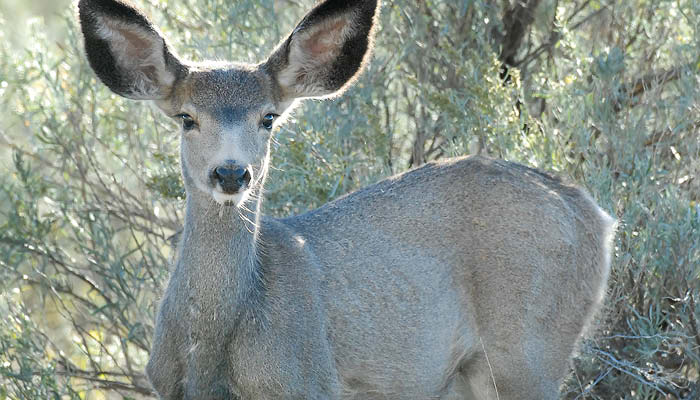Most years there’s no shortage of attention grabbers in late fall, with deer season coming and going and the wrap-up of fall sports and harvest and the early stages of the holidays.
Such concentration of activity sometimes prevents us from keeping up with an array of hunting and fishing information, and the good news is overshadowed by the not so good.
The early start to winter right after opening weekend of deer season was kind of a not-so-good news event. North Dakota resident wildlife could use a mild winter again, and the early cold spell was not a good start. However, things have moderated recently, so that’s good news.
Some other good news from the fall relates to survey numbers for mule deer, and a successful salmon spawning effort that should mean good salmon fishing in years to come.
Mule deer
The fall aerial survey for mule deer is conducted specifically to study demographics such as estimated reproduction for the year and the ratio of bucks to does. The aerial survey covers 24 study areas and 306 square miles in western North Dakota, and biologists compare survey results from the same areas year to year to determine annual changes and long-term trends.
Biologists counted 1,969 mule deer in the survey this past October, up from 1,761 in 2013. The buck-to-doe ratio of 0.50 (0.46 in 2013) was slightly above the long-term average, while the fawn-to-doe ratio of 0.95 (0.74 in 2013) was the highest since 1999, and above the long-term average of 0.90 fawns per doe.
“Overall, this year’s fawn production is very encouraging, and with average-to-good survival should result in another increase in the spring,” said Bruce Stillings, North Dakota Game and Fish Department big game management supervisor, Dickinson.
Salmon
Anglers across North Dakota have experienced first-hand the excellent water and habitat conditions for pike, walleye, perch and other assorted game fish. Beyond the usual targetsn there is good news from North Dakota’s niche salmon fishery, as fisheries crews in their annual salmon spawning operation on the Missouri River System collected approximately 1.3 million eggs.
Dave Fryda, Game and Fish Missouri River System supervisor, said about two thirds of the eggs came from Lake Sakakawea and the remainder from the Missouri River below Garrison Dam.
The average size of Lake Sakakawea female salmon was 8.5 pounds, almost 3 pounds larger than 2013, and among the highest weights documented since the inception of the salmon program in the mid-1970s. Female salmon in the Missouri River below Garrison Dam, which are typically larger than the lake fish, averaged 10.4 pounds.
Fryda added that the 2014 salmon spawning run provided enough eggs to meet next year’s stocking goals, even though the number of salmon caught was greatly reduced throughout the Missouri River reservoirs due to lingering effects of the 2011 flood.
“Salmon stocked during 2011 would have been a major component of this year’s spawning run,” Fryda said. “Unfortunately, large numbers of juvenile and adult salmon were entrained through the dams during the record flows that summer.”
Plans for 2015 are to stock Lake Sakakawea with 400,000 salmon, with none scheduled for the river below Garrison Dam, Fryda said.
While most of us would rather not have had the winter cold start so early, it has meant a good base of ice on most waters, and an early start to ice fishing. Considering the good fishing prospects ahead for the winter, an extra month of icefishing is pretty good news as well.


